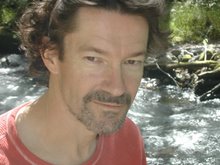Scientific American Newsletters scored in the department of misleading headlines with its recent article "Coal ash is more radioactive than nuclear waste." Read it here:http://www.sciam.com/article.cfm?id=coal-ash-is-more-radioactive-than-nuclear-waste&sc=WR_20071218
Closer reading reveals neither anything that is not already well known, nor anything of any concern; though of course the intent I think is clearly otherwise. Coal contains small quantities of naturally occurring radioactive elements which become concentrated in the ash when the coal is burnt and released into the atmosphere. Because of this release, residents near coal-fired power stations are actually exposed to about four times more radiation than residents near nuclear power stations, from which, when properly managed, there are virtually no emissions of radioactivity (the odd tritium spill notwithstanding). This has been known for ages; the EPA website's online radiation exposure calculator contains the numbers. I have used it in my class to illustrate one of the myths about the hazards of nuclear power. Try it yourself at: http://www.epa.gov/radiation/understand/calculate.html And, as the article makes clear, even the radiation exposure from the coal burning poses no health risk; it is far less than what one gets from staring at a TV and so far I have not heard risk of radiation poisoning as a reason for rationing TV time in the young.
Of course the nuclear waste that the coal is being compared with is not the actual spent fuel, which is hugely radioactive and poses an ongoing challenge for its effective disposal - at least in this country. For whatever reason, the French, with their much higher penetration of nuclear power generation, don't seem nearly as agonized by the whole thing.
The radioactive coal article is a neat segue into the recent announcement that the Futuregen advanced coal power plant project has been awarded to little Mattoon, Illinois. Dulcie and I visited there once on the occasion of an Honors conference at which some of my students were presenting. Mattoon is close to Charleston, home of Eastern Illinois University. It is really a one horse town, the lone Sonic Burger by the highway representing perhaps the height of its gastronomic repertoire. We searched high and low before finding the single coffee shop in Charleston, albeit a rather interesting and idiosyncratic dive with all unmatching furniture but WIFI, welcomingly far removed from the scrubbed, sterile corporate cleanliness of your typical Starbucks. Overall a depressing place, although some beautiful old homes no doubt available at killer prices and horrendous heating bills (the wind blew cold when we were there). I left with the thought that I could never recommend EIU as a destination for students.
But that is all a bit of a digression from the main point: the significance of the Futuregen project. Will this be SSC-II? Back in the day the same two states (Illinois and Texas) battled it out to land the Superconducting Super Collider. It eventually went to Texas; but the project was subsequently killed for mammoth cost overruns. Already there are dark mutterings over the costs of Futuregen ($1.8 billion and climbing) which may cast a shadow over its future.
And what of the viability of the project? Clearly, the development of new/alternative energy sources must become a political matter and cannot rely on a few well-intentioned folks buying hybrids; but in so doing the process can become corrupted and perverted by political interests. To wit: Illinois possesses corn and coal. Local political interests will favour pushing these over other energy sources like wind and waves for example (Cs over Ws). Is that actually desirable? Skepticism abounds over the viability of corn (more on that later). Meanwhile, the Futuregen is based upon the mind-boggling idea that all the CO2 generated in the energy extraction from the coal will be buried deep underground (sequestration is the official term) and kept there for eternity. In other words, this once prime villain in the greenhouse gas department would become carbon-free. The project's champions like to call it clean energy. Others don't agree. Brian Urbaszewski from the Respiratory Health Association of Metropolitan Chicago (long-winded new name of what used to be the Chicago Lung Association), who had spoken at our Global Warming town meeting (and whose name no one seemed to be able to spell), wrote in the Tribune about the particulates that the Futuregen would still be producing. Still dirty after all these years. It will be interesting to see how the project goes. If it does, it will be banner days at Sonic Burger.
Scienceblogs is shutting down
8 years ago





No comments:
Post a Comment